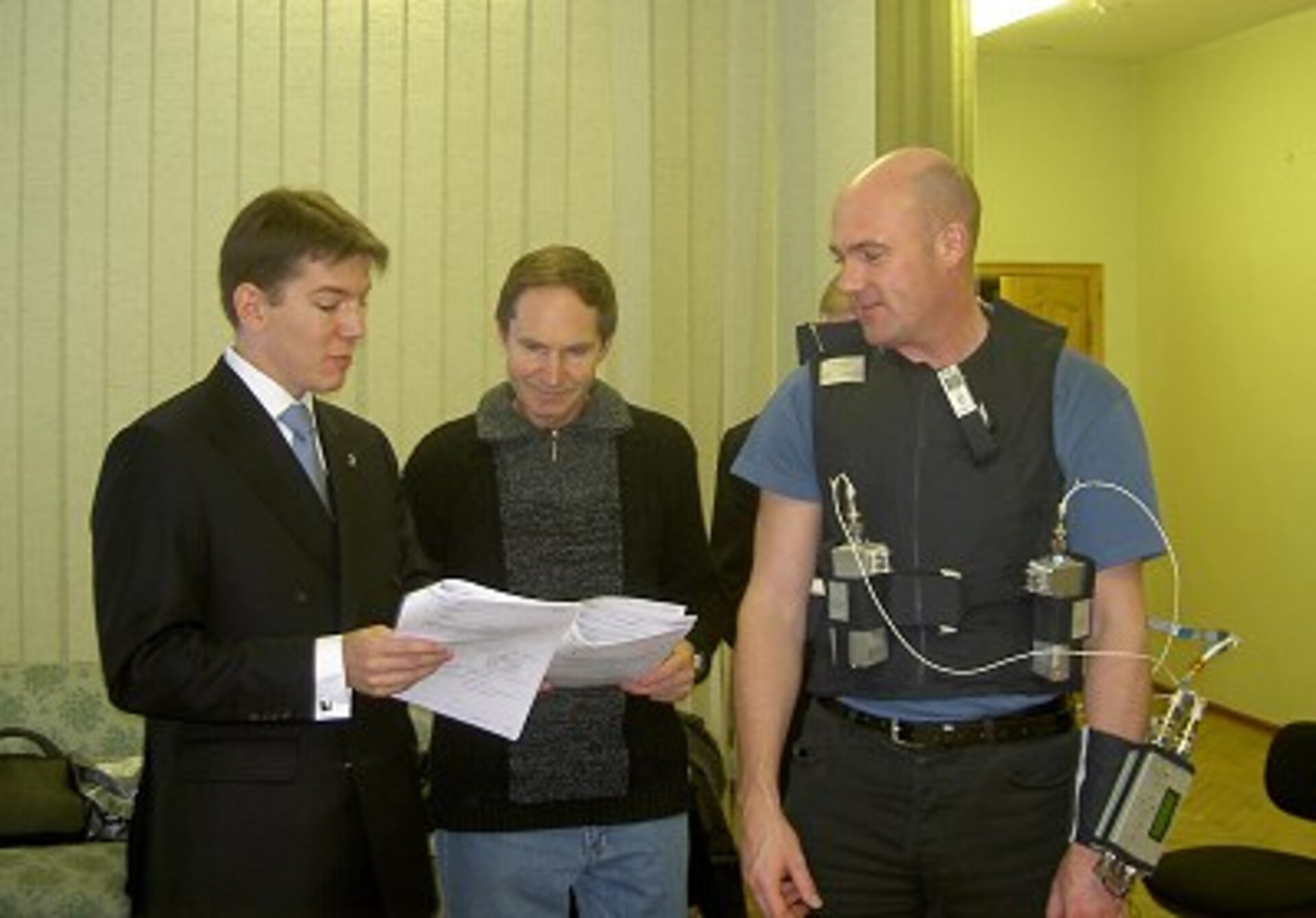André Kuipers' diary - Part 7: Vibration test and parabolic flights
22 - 28 januari 2004 This week I have been working with the vibrating vest developed by TNO in partnership with Dutch Space. The vest contains 56 vibrating elements, similar to those in mobile telephones. The vest is intended to aid astronauts with their sense of direction. Once you have calibrated the equipment by the position of the floor, and you turn sideways for example, you feel vibrations running from bottom to top against your side. If you are hanging upside-down, you feel the elements vibrating against your shoulders.
TNO wants to find out whether the vest – which actually functions as an extra sensory organ – is useful in getting your bearings in the Space Station, where you naturally do not know what is 'up' and what is 'down'. It is possible that feeling where 'down' is will also help to counter space sickness and help the astronauts to sleep better. On the other hand, the vest could also be used on Earth. By pilots, for example, or by fire fighters to help them find their way through thick smoke.
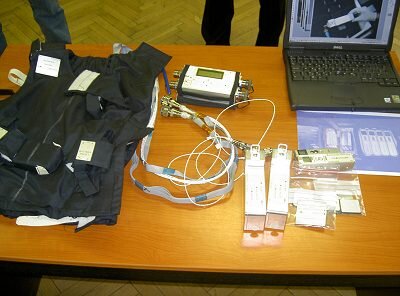
Decked-out
I will test the vest in space on five successive days, both during the actual tests and while engaged in other activities. In the actual tests, my colleague will spin me round and put me in all kinds of positions; I will then have to indicate where the 'floor' is. This week, I ran through all the procedures to check exactly what I have to do. When I am on the Station, I will wear other gadgets apart from the vest, such as a blood pressure meter on my arm and around two fingers. So there will be times when I will float around like a well decked-out lab guinea pig.
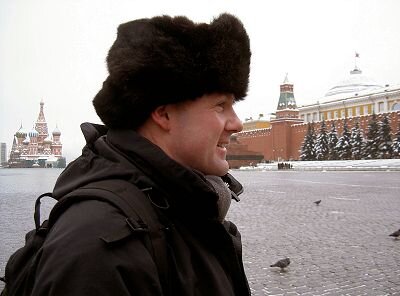
Moscow
My girlfriend came to visit last weekend. Together with an acquaintance, we went on a day trip to Moscow. Naturally, we visited the Kremlin and the famous church on Red Square. The metro is also worth visiting in its own right. Now and again we got off the train just to look at all the mosaics and pictures in the stations.
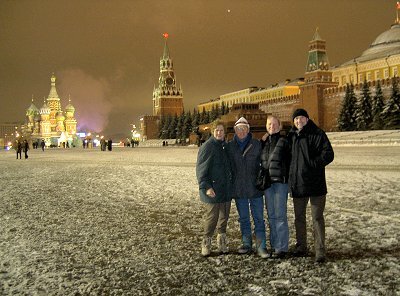
At lunchtime, we ate at an Internet café where you can order your food online. I also had a quick look at my own diary on the esa.nl website and other websites such as Zeg het ISS and Seeds in Space. Just to see how everything is coming along.
After that, we went to Gorky Park. In winter the whole park is sprayed with water, even the paths. There are stalls everywhere selling food and drink, and there are shooting booths and a Ferris wheel. Nobody walks along the paths – they all skate. I did so too last year. This year I just walked; I could not even contemplate risking a broken leg by going skating.

This weekend, my parents visited to see what spacesuit training is like in the Soyuz simulator, to visit the space travel museums and to see Moscow under a blanket of snow. On a winter evening, the illuminated Red Square looks like a scene from a fairy tale.
Food tasting
During the week I also had a meeting to try out the food that we will get on board. I tried out everything on the menu and gave each dish a mark for taste on a scale of one to ten. The menu contained just about everything imaginable. Pork, pasta, goulash and mincemeat with onions. And, of course, yoghurt for breakfast and muesli bars, all sorts of fruit juices and other beverages. We passed all forty dishes round between us. We had to take a forkful, taste it, then move on to the next dish. A kind of feast that leaves you feeling rather full.
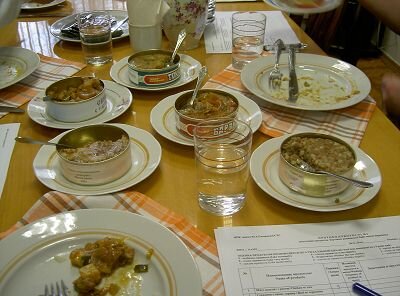
In my opinion, the goulash tasted best, and a type of yoghurt with nuts in it was very good too. And I do love fruit juices. There was some kind of cereal dish that I found quite inedible; it had no taste at all. There were one or two other things that I definitely did not want on my menu, so I only gave them a mark of three or four.
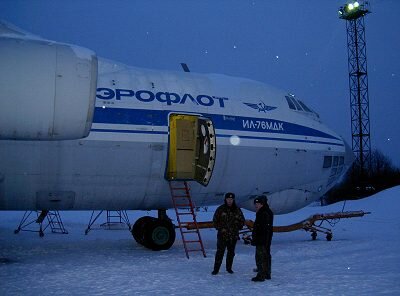
Parabolic flight
On Wednesday I had training to prepare for the weightless conditions I will soon experience. The weightless conditions are created in an aeroplane. We fly from an airfield near Star City in an enormous cargo aircraft, the Ilyushin 76. The 'plane climbs at full power, with its nose at an angle of fifty degrees. Then the engine power is cut back and you 'fall', as it were, upwards a little and then down, until they pull the nose up again. It is like throwing a stone in the air. You fall together with the 'plane, and so you are not being pushed or held back any more. You are weightless for the duration of the parabola and float for twenty seconds. This is called a parabolic flight.
I have often flown parabolic flights with ESA, initially as a doctor and later as a researcher and subject for experiments. However, the flights with the Russians are purely for training astronauts and cannot be compared with the scientific flights. ESA uses an Airbus; if you stick your arm out in one of those, you touch the ceiling. This aircraft, on the other hand, is over three metres high and you have oceans of space to move in.
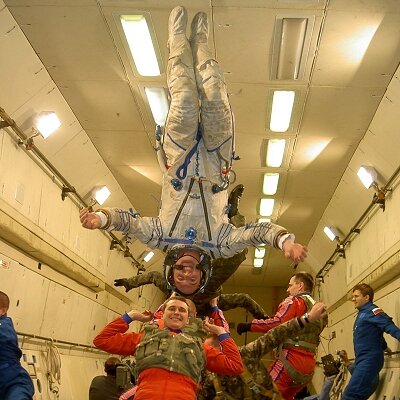
Together with my colleagues, I trained for the heavier work. In the Airbus, everything is bolted down and the biggest item you are allowed to float is a pen or a bottle of water. Now we had to handle fifty-kilogram weights to find out what it is like to move big racks in space. Although there is no weight in the Space Station, the mass remains the same. If you give something a push, it floats on until you stop it. In the Space Station, a heavy instrument rack can do a lot of damage unless you slow down such a big mass in good time. That can be pretty dangerous, so you have to learn how to do it properly.
Tight squeeze
I also had to put on a spacesuit during a parabola. It is really difficult because you have nothing to support you. If you push one way, you fly off in the other direction. The suit was specially made for these training exercises and, unfortunately, it was a size too small for me. It was a tight squeeze and it took a lot of effort to get it on. After we landed, I sent my girlfriend a text message. It was along the lines of: "That's it for now". The next time that I am weightless it will be for 864 000 seconds instead of just twenty.


